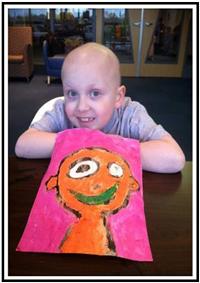Spring is in the Air: Surviving Your Child’s Spring Allergies
By Christie Leath, NP-C, Cone Health
It’s that time of year. The days are longer, the weather is warmer, kids can play outside and flowers come alive again with cheerful colors.
Unfortunately, it’s also the time when pollen from trees, grasses, plants and weeds awaken from their winter slumber to fill the air and trigger seasonal allergies, sometimes called “hay fever.”
Children as young as three years old can experience seasonal allergies. In fact, the Centers for Disease Control and Prevention reports that more than six million children have suffered from hay fever in the past 12 months.**
If your son or daughter can’t stop sneezing, has itchy eyes or throat, a runny nose, or congestion and coughing, chances are good they are suffering from seasonal allergies. Seasonal allergies are especially likely when symptoms are repetitive, occur during allergy season and are not accompanied by a fever, which can be a sign of a cold.
Often children’s seasonal allergies can be treated effectively at home with over-the-counter allergy medications formulated especially for kids. Non-sedating antihistamines such as Allegra®, Claritin® or Zyrtec®, steroid nasal sprays and allergy eye drops can all be effective in managing aggravating symptoms.
As always, parents should contact your healthcare provider if you have any questions or concerns about your child’s symptoms or specific medicines. Make note of when your child’s symptoms are worse, such as during the daytime, seasonally or after exposure to a certain trigger, and let your doctor know.
If symptoms are especially difficult to control, it may be time to pay a visit to a pediatric allergist who specializes in treating allergies and asthma in children. Talk with your child’s primary care provider for more information or for a referral to a specialist.
To help decrease your child’s exposure to pesky allergens this spring, follow these tips:
~ Keep windows and doors closed at home and in the car;
~ Use the air conditioner to help kill dust mites, decrease humidity and keep pollen out;
~ Dry clothes in the dryer and not outside;
~ Avoid outside play in the early morning hours when pollen levels are highest;
~ Keep pets out of your child’s room, because even if the child is not allergic to the family dog, the dog may have rolled around in the grass and pollen;
~ Use dust mite covers on your child’s bedding; and
 ~ Have your child take a shower and change clothes after playing outside.
~ Have your child take a shower and change clothes after playing outside.
Christie Leath is a Certified Family Nurse Practitioner at InstaCare, a part of Cone Health. For more information, please visit InstaCare at https://www.instacarecheckin.com.
*Sponsored by Alamance Regional Medical Center
**Centers for Disease Control and Prevention, National Center for Health Statistics, Allergies and Hay Fever, Morbidity: Children Under Age 18 Years







